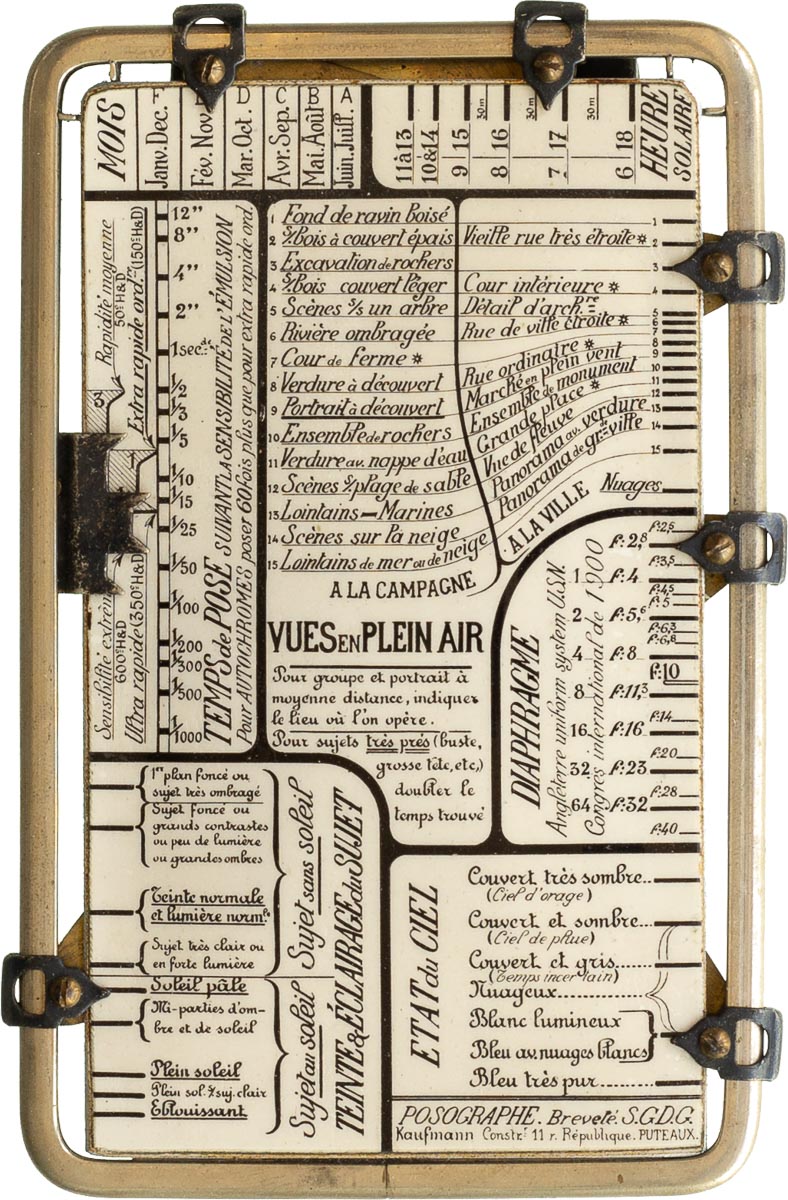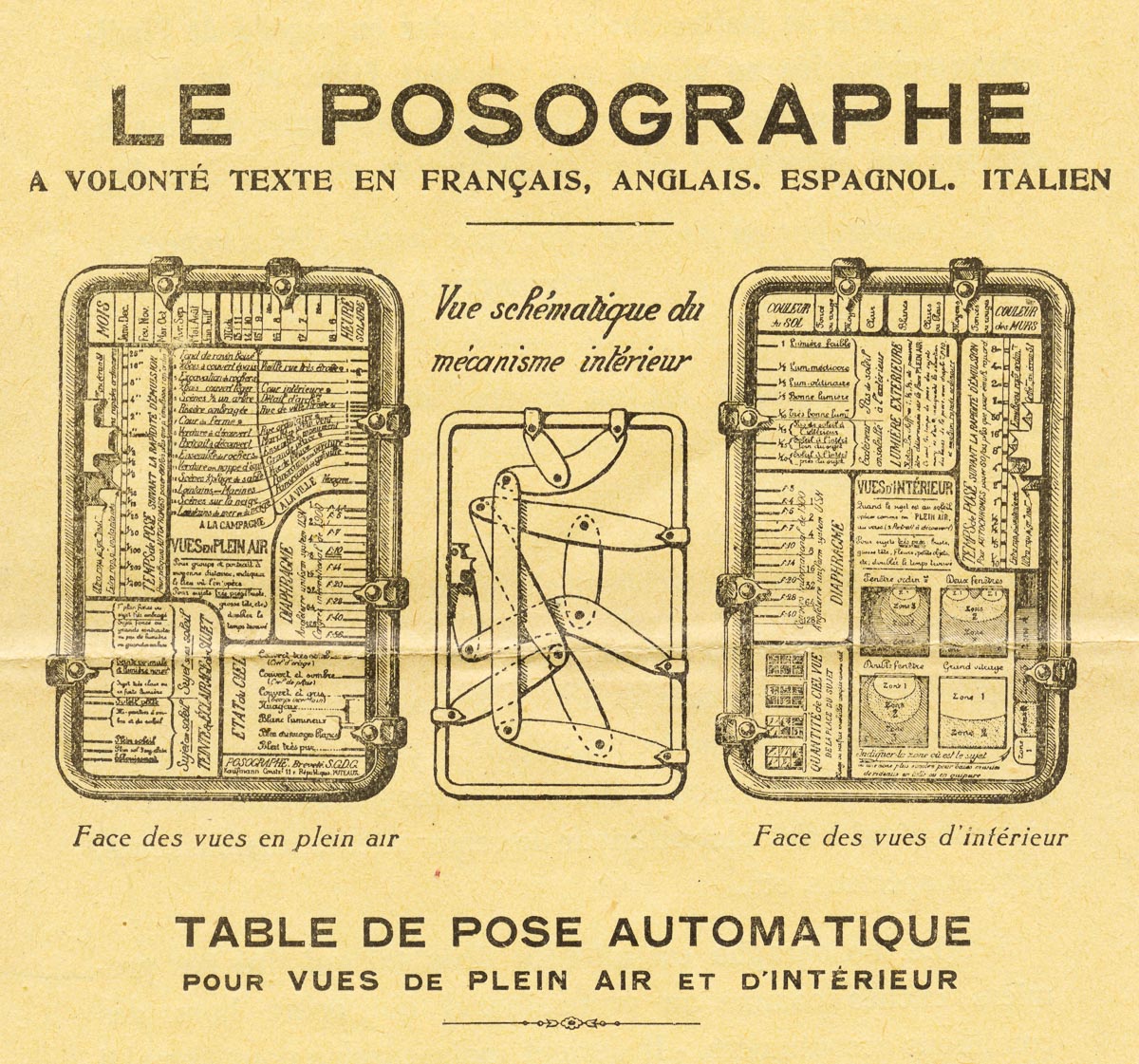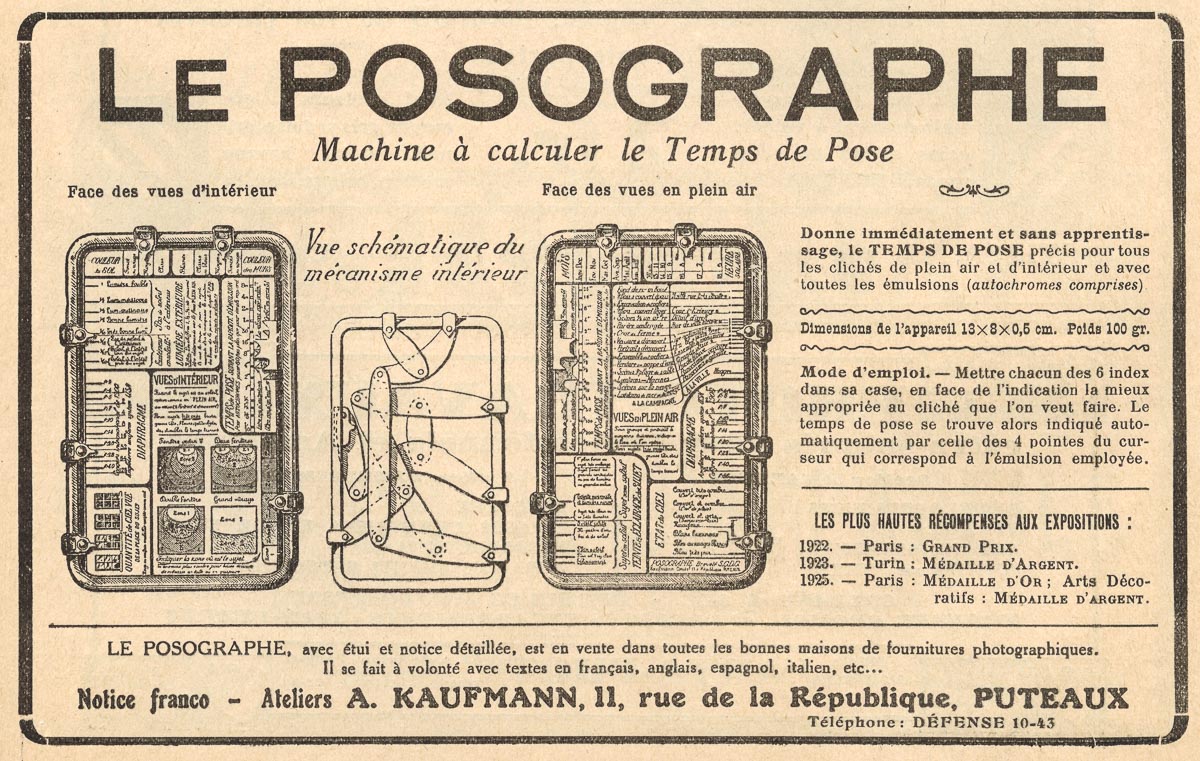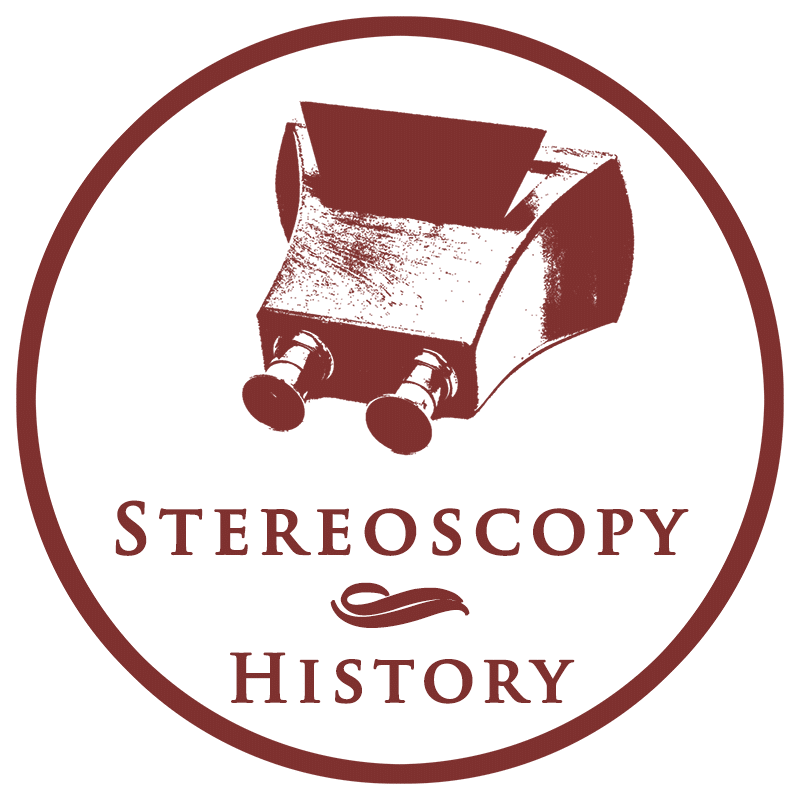Le Posographe is an early exposure calculator. The required camera exposure time for a photo in the early days of photography depended on the available light, the lens aperture and the photosensitive emulsion. The latter in particular was an incalculable factor, since the emulsion was prepared by the photographers themselves. With the introduction of the gelatin silver process, pre-prepared negative plates were made available commercially. This allowed for more standardised emulsions, but calculating the correct exposure time remained challenging. Photographers used exposure tables or simply made a best guess based on their experience.

Auguste-Robert Kaufmann patented in 1922 the design of an exposure calculator, that was introduced under the name Posographe. Le Posographe consisted of a metal plate surrounded by a 13 x 8 cm frame. The plate was printed on both sides. One side contained the exposure settings for outdoor photography; the other side showed the settings for indoor photography. Six metal sliders were mounted on the frame. The sliders set the exposure variables, such as lens aperture, month, time of the day and cloudiness. The large slider was the output slider and showed the exposure time. The output slider had four indicators to support multiple emulsions, including autochromes. The exposure time went from 1/1000 sec. to 12 sec. All sliders were mechanically connected to each other. Moving one of the input sliders would shift the output slider immediately. Le Posographe was a clever design and became a great success. It was available in multiple languages.

Patent
| Number: | FR5421071 |
| Title: | Appareil indiquant le temps de pose pour l’obtention de clichés photographiques |
| Filing date: | 08-10-1921 |
| Publishing date: | 05-08-1922 |
| Applicant(s): | Kaufmann, Auguste-Robert |

Glossary: autochrome
References
- Kaufmann, Auguste-Robert (1922) Appareil indiquant le temps de pose pour l’obtention de clichés photographiques. Via: data.inpi.fr ↩︎
